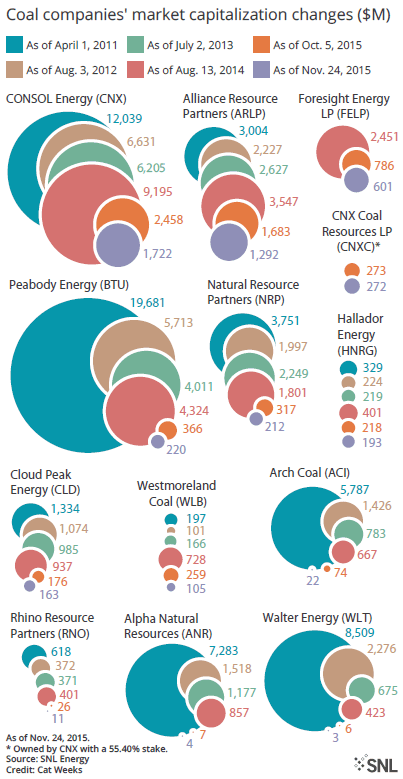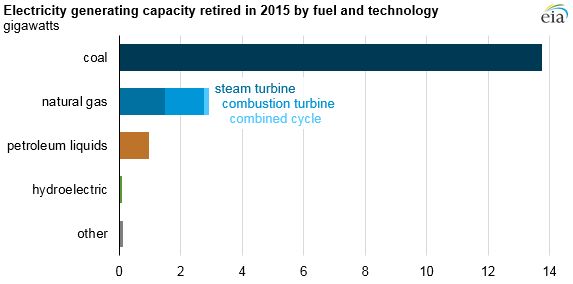Coal Jobs are Vanishing Before Our Very Eyes
Via The U.S. Chamber of Commerce:
Michael Kinsley, a long-time observer of national politics, explained 30 years ago in The New Republic that “a ‘gaffe’ occurs not when a politician lies, but when he tells the truth.”
In 2008 President Barack Obama, when he was running for the highest office in the land, committed one when he said, “[E]lectricity rates would necessarily skyrocket” because of his energy policies. If EPA’s Clean Power Plan goes into effect after withstanding legal scrutiny, that’s what will happen.
Democratic presidential candidate Hillary Clinton recently committed her own gaffe for saying, “We’re going to put a lot of coal companies and coal miners out of business.”
As politicians often do, she claims she was misunderstood and wants to replace those coal jobs with ones in renewable energy. But she, along with her opponent, Sen. Bernie Sanders endorses an extreme and unworkable “keep it in the ground” energy strategy. Dan Byers at the Institute for 21stCentury Energy points out, “Secretary Clinton proudly supports those regulations that destroy coal jobs, and has every intention to see they are implemented and even further tightened under her watch.”
MORE FROM ENERGY
Moving past parsing political speech, we face a hard truth: The American coal industry is being driven into extinction.
The Sierra Club boasted that’s its efforts have helped to shut down a remarkable 100 gigawatts of coal-fired electricity capacity since 2010 (roughly 1/3 of the country’s coal generation). Of course, the Sierra Club’s “success” means pain for most Americans, in the form of fewer jobs and higher energy prices. The National Mining Association estimates that 100 gigawatts gone equals at least 170,000 jobs lost [subscription required].
One way to see the results of the Obama administration’s so-far-successful “war on coal” is the jobs losses. As I wrote a few months back, there are 23% fewer coal mining jobs since 2008.
Another way is looking at what types of power plants have been shutting down. Spoiler alert: Wind and solar aren’t being tossed aside.
“[T]he country lost roughly the same total capacity of all of Kentucky’s electric sector coal plants that year,” Morning Consult’s energy writer Jack Fitzpatrick points out.
SNL Financial looks at the harm being done to the coal industry from another angle. The market capitalizations—how much stocks are worth—of the four largest coal companies have fallen by 99% since 2011.
snl_financial_coal_market_caps_2016.gif

Some of this is market-driven. The shale boom has produced an abundance of natural gas that has been replacing coal in electricity generation.
However, regulatory hits such as the Clean Power Plan have made it more expensive to operate coal-fired power plants, forcing them to shut down, pushing down coal demand, and costing mining and power plant jobs. These losses ripple into communities.
If history is any indication, innovations and global events will alter the supply and demand of energy in unexpected ways. No one knew the shale energy boom would happen until it did. It’s why we need policies that keep all types of energy sources on the table. It’s ludicrous to abandon coal, when the United States has so much of it—over 260 years of reserves.
Whoever wins the election this November must change the trajectory we’re on and stop using regulations to pick energy winners and losers. Our economy needs an “all of the above” energy strategy. Because when families and businesses pay more for electricity but get less, no spin will help the next president explain away that blunder.
See the article here.
- On May 6, 2016


